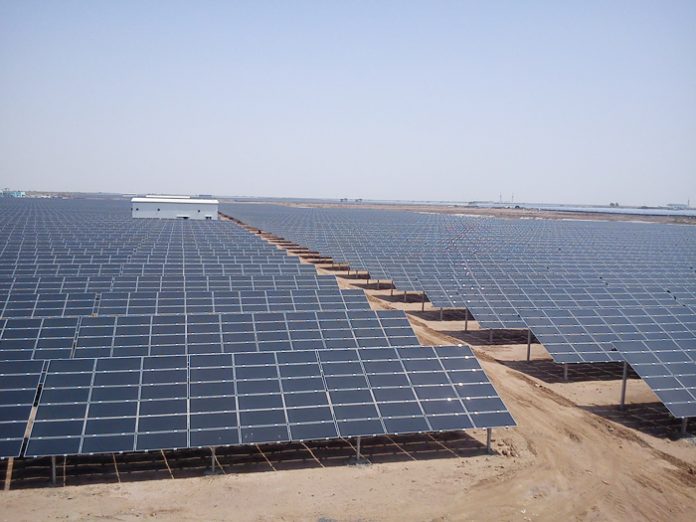Grid upgrade compresses CEMAC sovereign risk premium
Chad’s SolCaribe grid plan links fiscal repair and energy reliability as BEAC yields hold near 7% and global oil benchmarks (BCO=F, CL=F) frame external receipts across the CEMAC bloc.

Chad’s plan to overhaul its electricity grid through a partnership with U.S.-based SolCaribe marks a structural realignment in Central Africa’s energy investment strategy. Electricity access stood at roughly 12% in 2024, with rural coverage near 2%, while technical and commercial losses exceeded 35%. Chronic underinvestment in transmission and metering has constrained growth, widened fiscal exposure, and kept industrial tariffs among the highest in the region. The new grid-modernization program converts this deficit into a policy anchor for fiscal repair and energy reliability.
The macro foundation has improved enough to support the shift. Real GDP expanded by 1.9% in 2024 and is projected at 3.3% in 2025 as non-oil activity stabilizes. Inflation has eased to around 3.9%, from 6.2% in 2023, while the fiscal deficit narrowed to roughly 3% of GDP under IMF program oversight. Public debt stands near 32% of GDP, down from pandemic peaks above 40%, reflecting stronger revenue capture and controlled borrowing. Within the CEMAC bloc, the BEAC has maintained its policy rate at 4.50% since March 2025, and regional reserves cover about 4.8 months of imports. This combination of macro discipline, currency stability, and external backing allows grid reform without fuelling balance-of-payments stress or crowding out private credit.
The financial logic is measurable. Each percentage-point reduction in system losses lifts billable power, shortens the cash cycle, and compresses subsidy dependence. Smart-meter rollout and feeder-level monitoring enhance collection efficiency, allowing utilities to convert operating cash flow into securitisable receivables.
A ten-point fall in losses combined with a fifteen-point rise in collection could eliminate the utility’s operational deficit within two years. These improved receivables can support blended-finance structures—concessional first-loss tranches layered with senior XAF bonds cleared through BEAC markets—lowering sovereign risk premia across the CEMAC yield curve.
Fiscal and external linkages reinforce the reform’s macro relevance. Annual energy-sector transfers consume about 2% of GDP; a 20% cut in subsidies would reduce the fiscal gap by roughly 0.4 percentage points. Expanding reliable capacity from an estimated 200 megawatts toward 300–350 megawatts by 2028 would also lower diesel imports, which still account for over half of power generation.
A 10% reduction in refined-fuel imports would improve the trade balance by about 0.3% of GDP, while using domestic crude for power generation stabilises oil-related revenue and limits foreign-exchange volatility linked to Brent (BCO=F) and WTI (CL=F) price movements.
Market signals already suggest sensitivity to reform credibility. CEMAC sovereign auctions in 2025 have cleared between 6.3% and 7.1% yields, with higher bid coverage for issuers demonstrating cost-recovery frameworks. Successful grid modernisation and transparent performance metrics could compress Chad’s term premium within that range by improving fiscal visibility and reducing quasi-fiscal risks. For institutional investors, a metered grid expands the investable universe by enabling power-purchase agreements between mini-grid developers and the national utility, generating tradable XAF cash flows aligned with ESG mandates.
Comparative regional outcomes strengthen the policy rationale. Côte d’Ivoire’s grid upgrades and Senegal’s tariff reforms both reduced financing costs for independent power producers by up to 150 basis points within three years. Replicating even part of that trajectory could lift Chad’s real GDP growth by 0.3–0.5 percentage points through 2027.
The geopolitical calculus is equally strategic: by engaging a U.S. partner under climate-finance rules, N’Djamena diversifies beyond Chinese credit channels while adopting governance and reporting standards favoured by transatlantic investors. Embedded environmental and procurement transparency will likely determine whether Chad’s infrastructure program attracts institutional capital or remains aid-dependent.
Progress is verifiable through three indicators between 2025 and 2027: system losses reduced below 25%, collection ratios improved by 15 percentage points, and at least 150,000 new grid and productive-sector connections delivered. Achieving these targets would cut energy transfers by 15–20% relative to 2024, narrow the fiscal deficit by nearly half a percentage point, and signal the transition from donor-driven rehabilitation to bankable infrastructure.
Consistent execution, alongside stable BEAC policy and yields within the 6–7% band, would confirm that Chad has aligned fiscal consolidation, energy reliability, and credit-market credibility within a unified reform framework.





